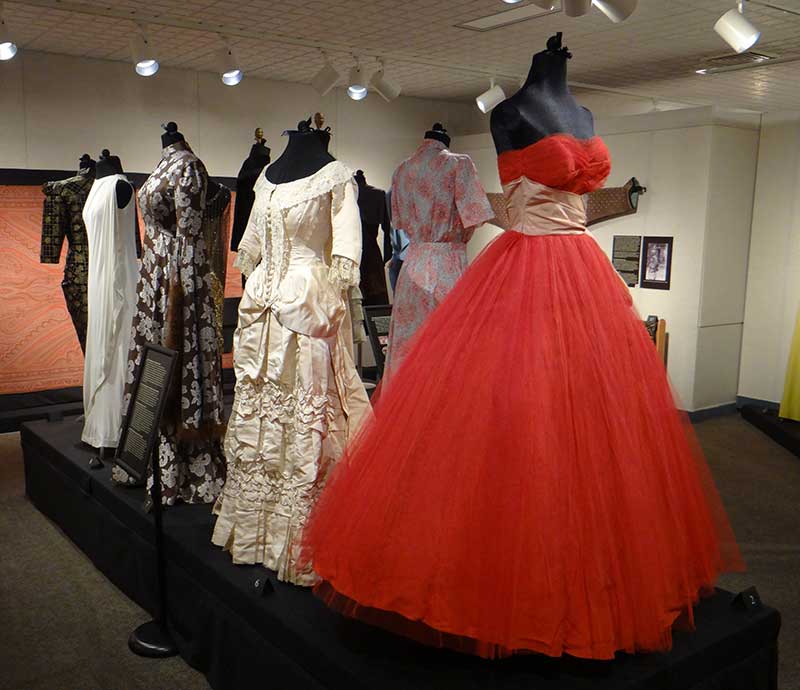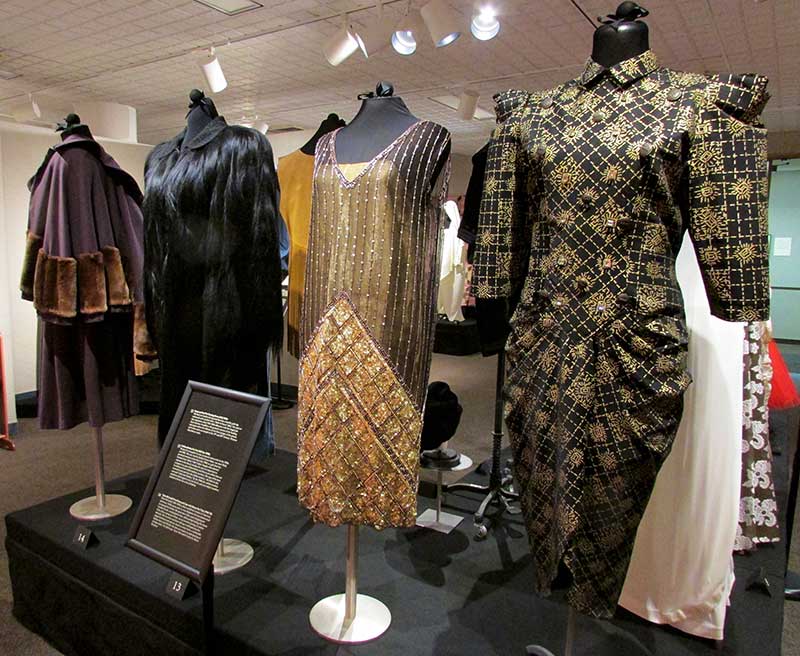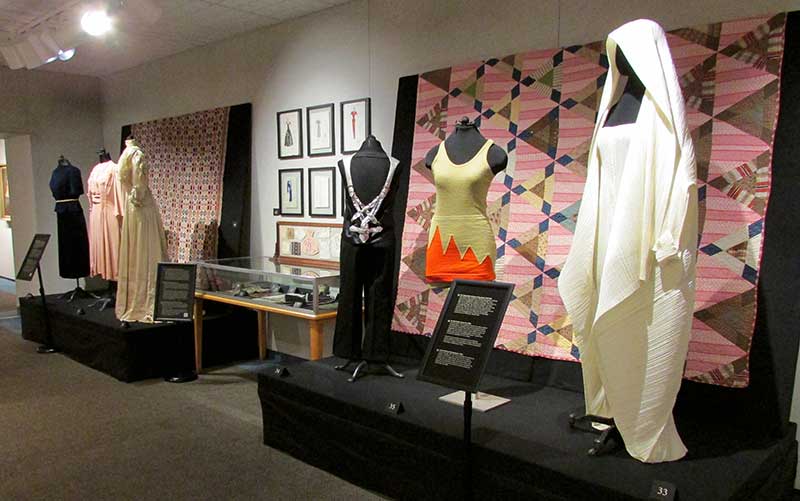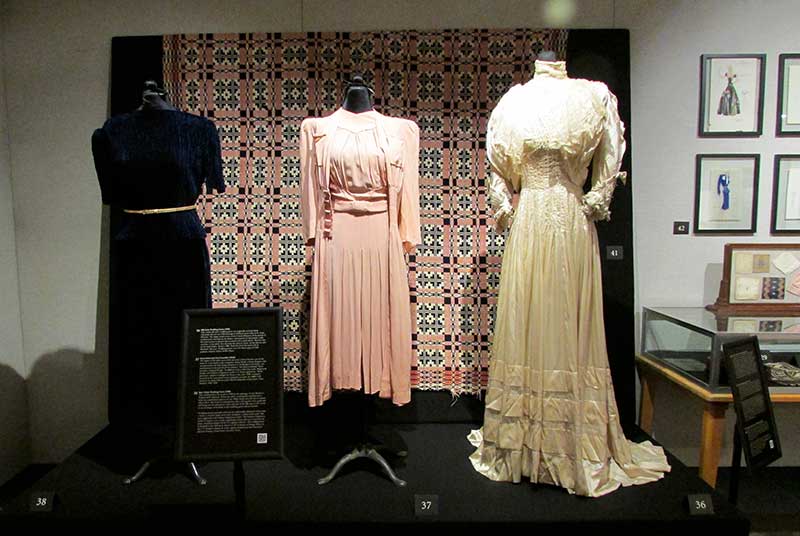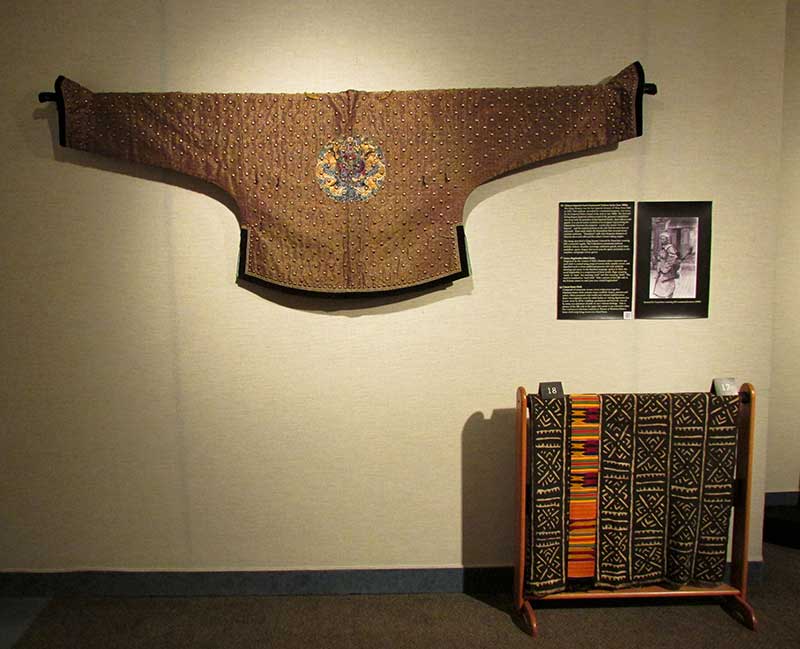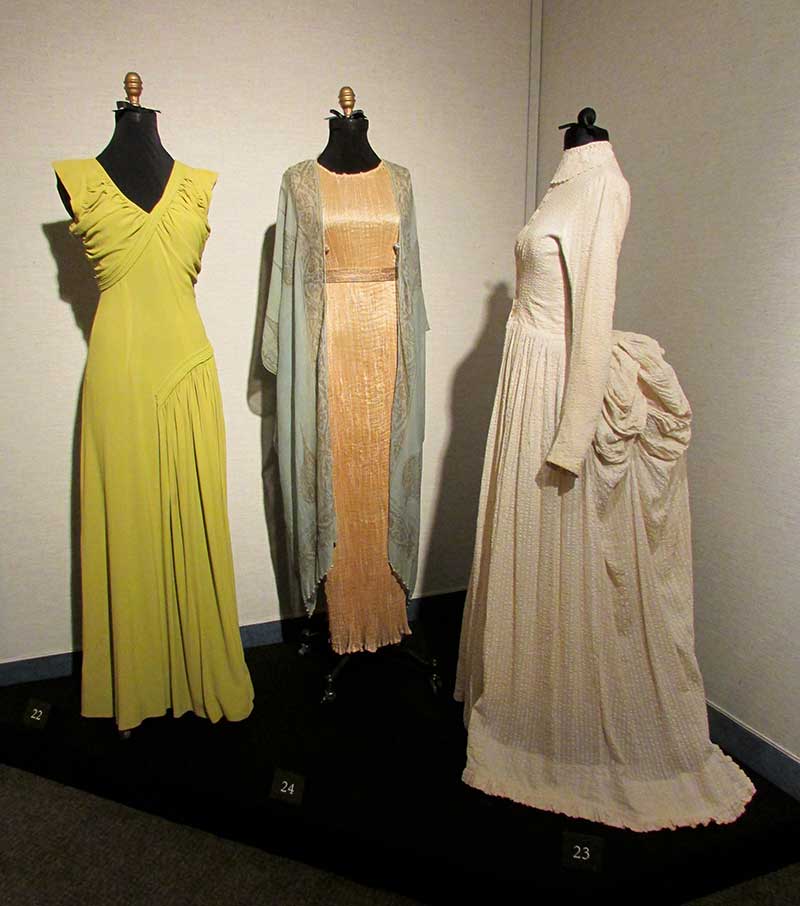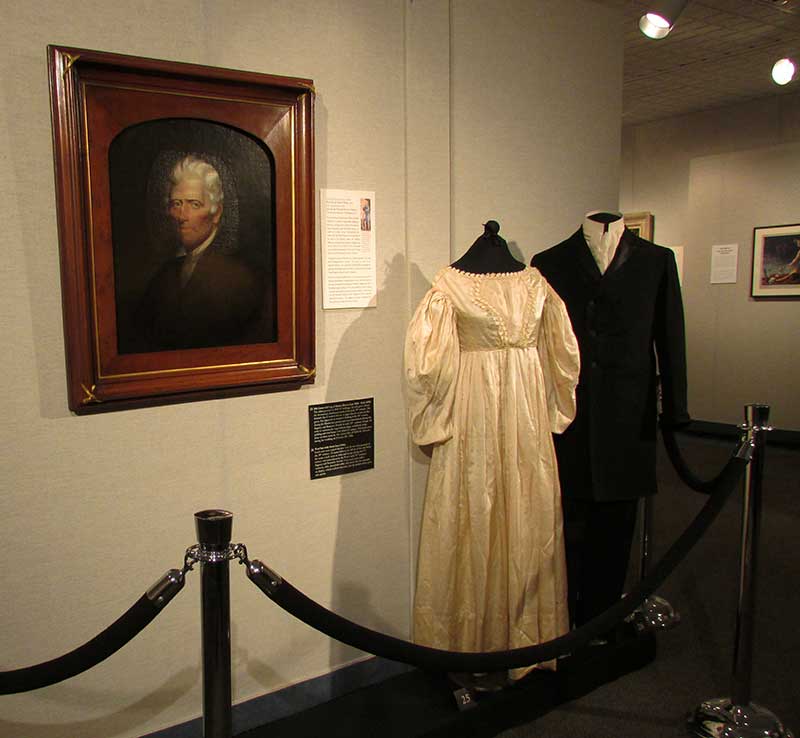Fashioning a Collection: 50 Years, 50 Objects (2017)
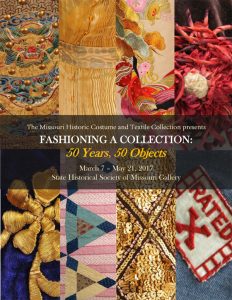
The Missouri Historic Costume and Textile Collection was established in 1967 by Carolyn Wingo to support the teaching mission of the Department of Textile and Apparel Management within the College of Human Environmental Sciences at the University of Missouri. MHCTC received its first donation of artifacts from the Kansas City Museum in Kansas City, Missouri in 1966 and has grown to include over 6,000 items of apparel, accessories and household textiles donated by alumni, faculty and friends.
This exhibit celebrates the variety and mission of the collection, and is thus organized by the three branches of that mission: exhibition/outreach, education, and research. The objects selected are those most frequently used in teaching and are student favorites, as well as objects used in research by undergraduate and graduate students, faculty, and visiting scholars. Finally, favorites from past exhibits are also included, as well as objects and new acquisitions that have never been previously exhibited.
Images below are numbered to reflect the exhibition catalog (pdf).
Exhibition and Outreach
An important mission of the MHCTC is to share the collection with the public. This is accomplished through exhibitions with campus and community museums, departments and institutions, and through talks and presentations to various groups around the state in an effort not only to encourage use of Collection artifacts, but to develop awareness and enthusiasm for fashion and fashion history. Exhibitions explore the meaning of dress in the past as a way to form connections to the present, revealing often hidden stories and histories of the people who wore them, the people who made them, and the importance of clothing in every day life. As you explore the variety of artifacts on display, what will you find meaningful? What might elicit a memory?
Click images to learn more. Historical and donor information will appear.





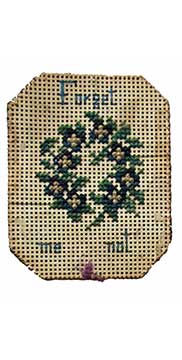
Teaching
The MHCTC encourages textile appreciation and scholarship through a variety of educational programs. Over 200 collection artifacts continue to be used annually in numerous TAM classes such as Softgoods Retailing, Apparel Production, and Integrated Apparel Design and Production. The majority of objects on exhibit are incorporated in TAM’s dress history courses: History of Western Dress, a writing intensive survey of the history of western dress and its global influences from prehistory to 1850 taught by Collection Manager Nicole Johnston; and 19th and 20th Century Western Dress, the required Writing Intensive dress history course for TAM majors and minors taught by MHCTC Curator Jean Parsons.
The use of dress objects in teaching encourages an enriched learning experience. Students discover relationships between historic dress artifacts and the people who wore them, even intimate details such as body shape, personal style choices, height, or shoe size. Intimate connections can also be made between past artifacts and individuals in the present. For example, we might imagine ourselves wearing clothing of the past – how it feels to breathe in a tightly-cinched corset, walk in a wide hoop skirt, or conform one’s feet into tiny, three inch shoes. Or perhaps an item calls to mind a special memory of an event or individual from one’s own past. Enabling students to view and explore objects in the classroom encourages these intimate connections with history.
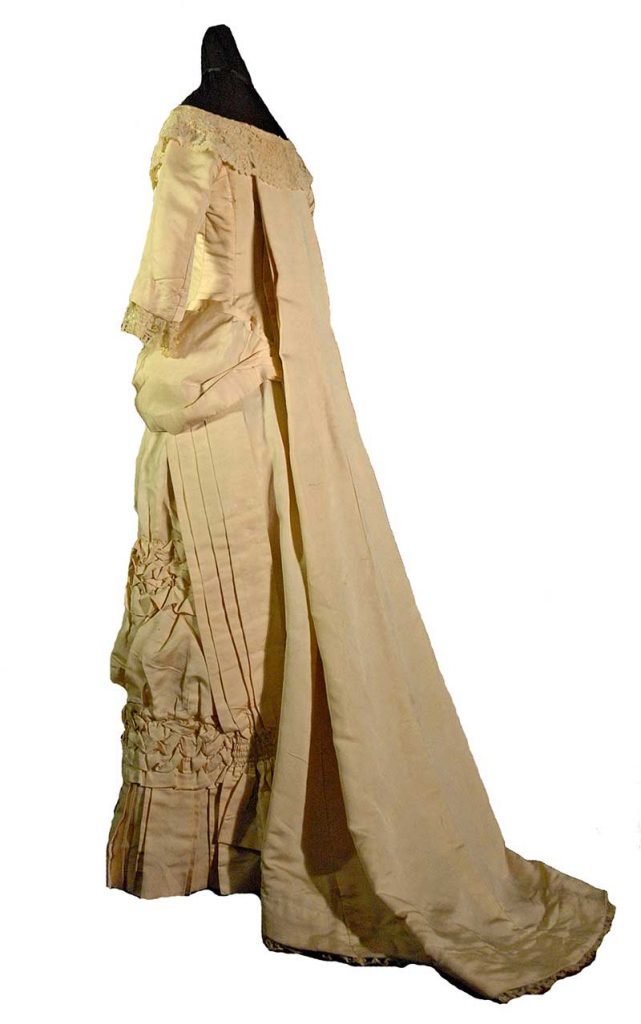





Research
Artifacts—in this case textiles, apparel, accessories and illustrations—are part of our history. As such, using them as a primary source for research can allow a deeper interpretation of our human past. Thus, while the three missions of the collection divide this exhibition, they are overlapping, with research a central connecting objective. It is the mission of exhibition curators to research and present stories of the past through displayed artifacts. Apart from the stories that are researched and presented in an exhibit, many of the objects used in teaching have also formed a beginning point for student research projects, in both history and design courses. Finally, objects in this exhibit were integral to published and/or presented research by undergraduate and graduate students, and by faculty and visiting scholars.






Exhibition Images

